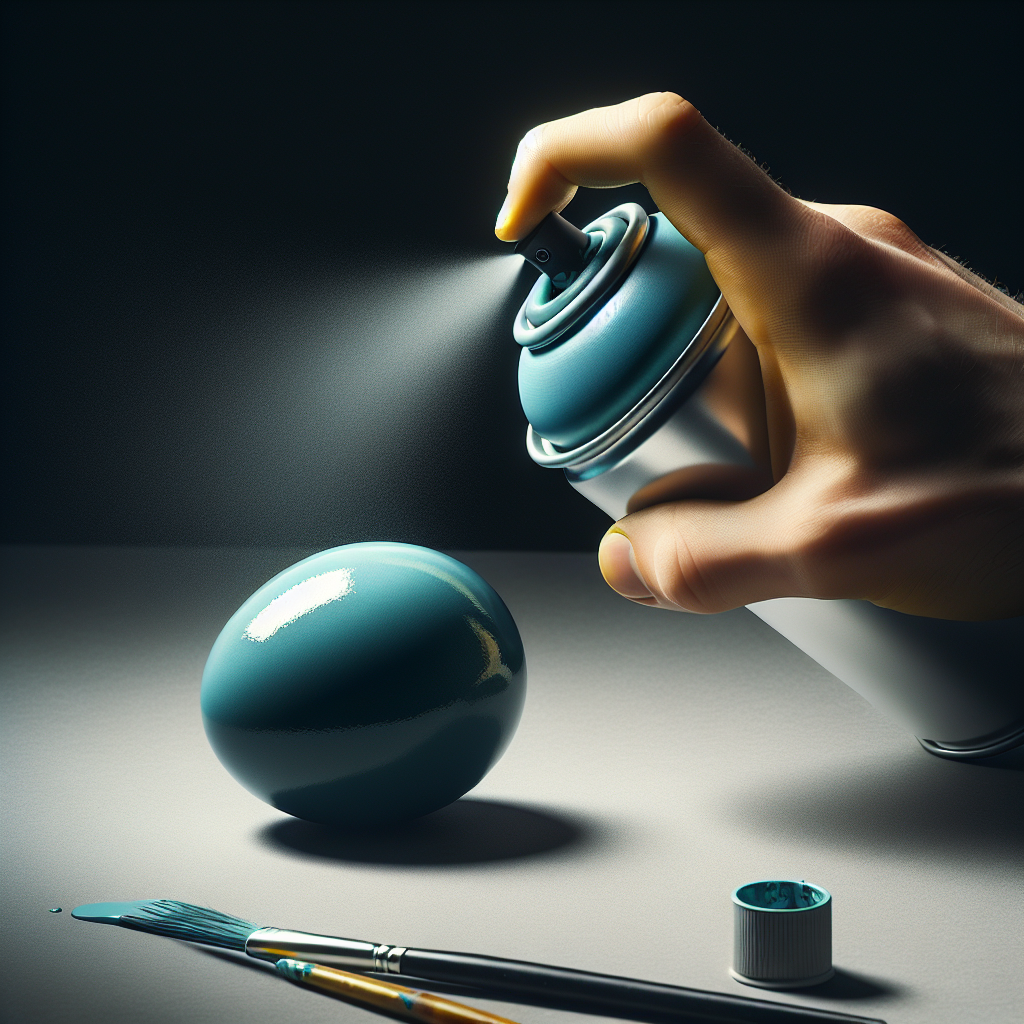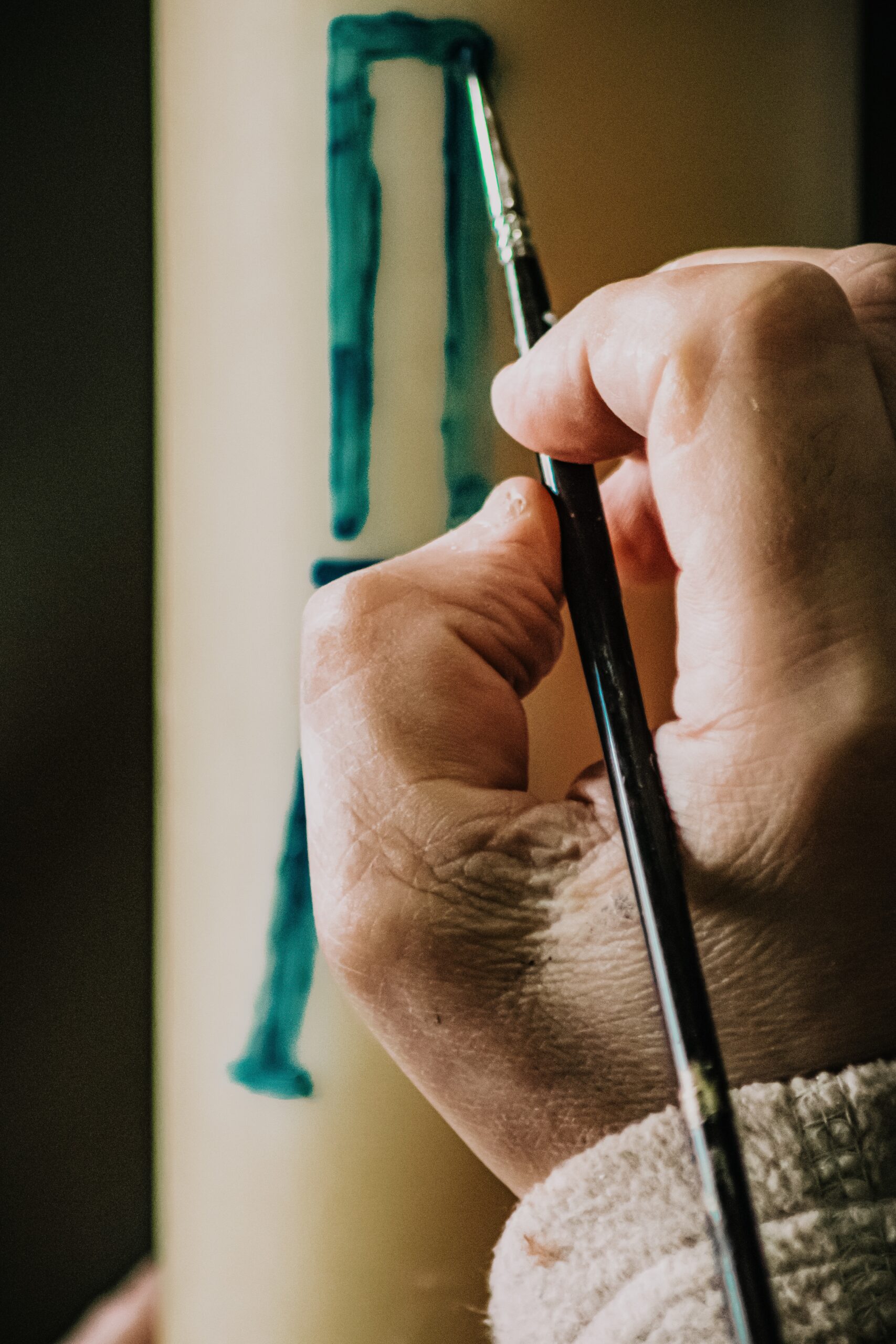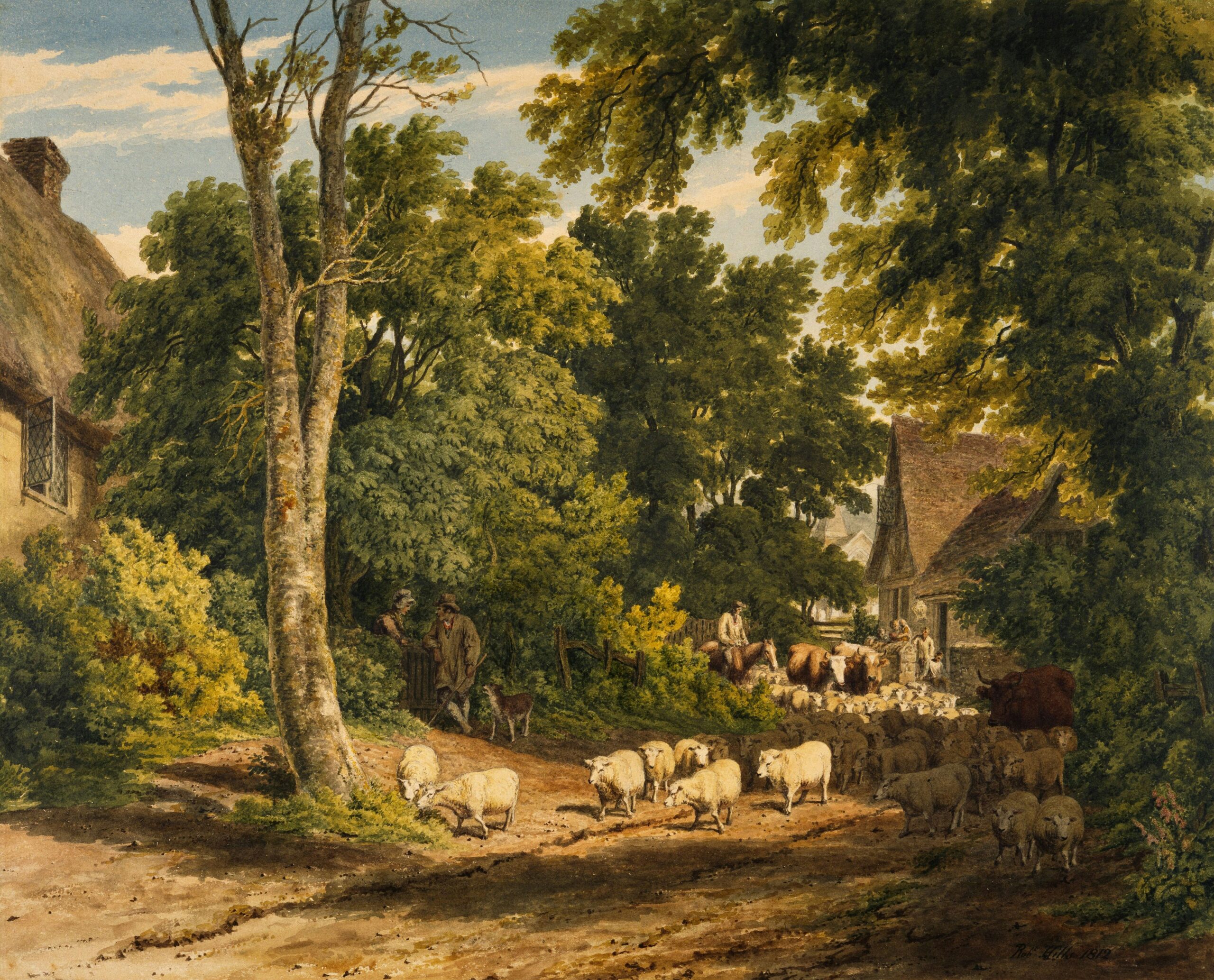In the world of DIY projects and touch-ups, understanding the coverage of a can of spray paint is crucial. It not only saves you valuable time and resources but also ensures a seamless and professional finish. In this article, we will explore and quantify the extent of coverage a can of spray paint provides, allowing you to plan and estimate accurately for your next painting endeavor. By delving into the factors that influence coverage and providing practical examples, you will gain the knowledge and confidence necessary to achieve the desired results every time. So let’s begin our exploration of how much surface a can of spray paint can truly cover.
Understanding Spray Paint Coverage
Definition of Paint Coverage
Paint coverage refers to the amount of surface area that can be covered by a given amount of spray paint. It is measured in square feet or square meters and indicates how far the paint will spread when applied to a specific surface.
Variation in Paint Coverage
It is important to note that paint coverage can vary depending on several factors, including the type of surface being painted, the quality of the spray paint, the spray technique used, and the environmental conditions in which the painting takes place. These variations can significantly impact the overall coverage achieved with a can of spray paint.
Factors Influencing Paint Coverage
Several key factors can influence the coverage achieved with spray paint. Understanding these factors can help you determine the amount of spray paint needed for a specific project and achieve the desired results. The following are some of the most influential factors:
Average Coverage of a Can of Spray Paint
Typical Coverage
On average, a can of spray paint can cover approximately 20 to 30 square feet (1.85 to 2.79 square meters) of surface. However, this coverage range can vary depending on the specific brand, paint formulation, and application method.
By Manufacturer
Different spray paint manufacturers may have different coverage rates for their products. It is essential to check the manufacturer’s specifications or product labels for information on expected coverage per can.
By Can Size
The size of the spray paint can also affect the coverage achieved. Typically, larger cans contain more paint and can cover a larger surface area. However, it is important to note that the coverage may also depend on the spray pattern and flow rate of the paint nozzle.

This image is property of images.unsplash.com.
Influential Factors on Spray Paint Coverage
Type of Surface
The type of surface being painted plays a significant role in determining the coverage achieved with spray paint. Porous surfaces, such as wood or rough-textured materials, tend to absorb more paint, resulting in lower coverage. On the other hand, smooth surfaces, like metals or plastics, often require less paint for complete coverage.
Surface Preparation
Proper surface preparation is crucial for maximizing spray paint coverage. A clean, dry, and smooth surface allows the paint to adhere better and spread evenly. If the surface is dirty, greasy, or has loose particles, it may hinder the coverage and result in an uneven finish.
Spray Technique
The technique used when applying spray paint can greatly affect the coverage achieved. Applying the paint in even, overlapping strokes ensures uniform coverage and minimizes wastage. In contrast, inconsistent spraying patterns or excessive paint application can lead to inadequate coverage and possible drips or runs.
Environmental Conditions
The environmental conditions during spray painting can impact paint coverage. Factors such as temperature, humidity, and air pressure can affect the drying time and flow rate of the paint. It is preferable to spray paint in moderate temperature and humidity conditions, as extreme conditions may result in slower drying times or affect the paint’s consistency.
Impacts of Surface Type
Coverage on Wood
When painting wood surfaces, the coverage achieved can depend on several factors. The porosity and texture of the wood can affect how much paint is absorbed and how evenly it spreads. In general, a smooth, sealed wood surface will require less paint for full coverage compared to rough or unfinished wood.
Coverage on Metal
Metal surfaces typically require less paint for full coverage due to their smooth and non-porous nature. However, it is important to ensure that the metal surface is clean, free from rust or corrosion, and primed if necessary for optimum paint adhesion and durability.
Coverage on Plastic
Painting plastic surfaces can be challenging due to their smooth and non-absorbent nature. To achieve maximum coverage, it is essential to properly prepare the plastic by cleaning, sanding, and, if needed, applying a plastic adhesion promoter or primer before spray painting.
Coverage on Other Materials
The coverage achieved on other materials, such as concrete, fabric, or glass, will vary depending on their specific properties. In some cases, special primers or treatments may be required to ensure proper paint adhesion and coverage.

This image is property of images.unsplash.com.
Role of Surface Preparation
Cleanliness of Surface
Proper surface cleanliness is fundamental for achieving optimal spray paint coverage. Removing any dirt, dust, grease, or contaminants from the surface before painting ensures better paint adhesion and a smoother finish. Thoroughly clean the surface using a mild detergent or appropriate cleaning solution, rinsing it well before applying the spray paint.
Surface Primer
Using a suitable primer on the surface before applying spray paint can significantly improve coverage. Primers help create a uniform base, promote adhesion, and enhance the paint’s ability to spread and cover the surface. Select a primer that is compatible with the surface material and follow the manufacturer’s instructions for application.
Surface Roughness
The roughness or smoothness of the surface can impact spray paint coverage. Rough or textured surfaces may require more paint to achieve complete coverage, as the gaps and crevices can trap paint, resulting in a less uniform finish. Smoothing out the surface or using a textured spray paint specifically designed for textured surfaces can improve coverage and overall appearance.
Impact on Paint Coverage
Surface preparation is crucial because it sets the foundation for how well paint will adhere and spread. Neglecting proper surface preparation can lead to poor coverage, premature paint failure, and the need for additional coats, ultimately wasting time and resources.
Effect of Spray Technique
Proper Spray Technique
Using the correct spray technique is essential for achieving maximum coverage with spray paint. Holding the can upright and at a consistent distance from the surface, usually 8 to 12 inches (20 to 30 centimeters), ensures a consistent flow of paint and even coverage. Moving the can in smooth, overlapping strokes helps distribute the paint evenly across the surface.
Impact of Over-spraying
Over-spraying, or applying excessive paint in a single area, can adversely affect coverage. Excessive paint can create drips, runs, or a thick coat that may not dry properly, leading to reduced coverage. It is crucial to spray paint in light, even coats, allowing proper drying time between each coat, to achieve the desired coverage.
Impact of Distance
The distance at which the spray paint can is held from the surface can affect coverage. Holding the can too close may result in excessive paint application, while holding it too far may cause the paint to disperse unevenly, reducing coverage. It is important to maintain a consistent distance throughout the painting process to achieve optimal coverage.
How Technique Influences Coverage
Proper spray technique ensures efficient and effective coverage, minimizing the amount of paint used and maximizing the area covered. Consistency, control, and precision in spray pattern and distance are key components of an effective spray technique that results in optimal paint coverage.

This image is property of images.unsplash.com.
Influence of Environmental Conditions
Effect of Temperature
Temperature can greatly impact spray paint coverage. Extremely hot temperatures can cause the paint to dry too quickly, resulting in reduced coverage and potential paint defects. Cold temperatures, on the other hand, can slow down the drying process, leading to prolonged drying times and the risk of dust or debris adhering to the paint. Optimal temperature ranges, recommended by the paint manufacturer, should be maintained for achieving the best coverage and finish.
Effect of Humidity
Humidity levels can affect the drying time and flow rate of spray paint. High humidity can slow down the drying process, leading to extended drying times and potential surface imperfections. Lower humidity levels can accelerate the drying process and result in inadequate coverage. It is advisable to spray paint in moderate humidity conditions for optimal coverage and paint performance.
Effect of Air Pressure
Air pressure, specifically during aerosol spray painting, can affect paint coverage. Different spray paints may require specific air pressure settings for optimal coverage. Proper adjustment of air pressure, according to the manufacturer’s recommendations, ensures consistent paint flow and coverage. Deviating from the recommended air pressure settings can lead to insufficient coverage or uneven distribution of paint.
How Environmental Conditions Affect Coverage
The ambient temperature, humidity, and air pressure during spray painting significantly influence paint coverage. Maintaining the appropriate environmental conditions ensures that the paint flows properly and adheres well to the surface, resulting in maximum coverage and a high-quality finish.
Comparing Different Brands of Spray Paint
Coverage by Brand
Various brands of spray paint may have different coverage capabilities due to differences in paint formulations, pigments, and propellant gases. It is crucial to review the manufacturer’s specifications to compare coverage rates between brands. This allows you to choose the most suitable paint for your specific project requirements.
Brand Quality and Coverage
The quality of the spray paint brand can impact coverage. Higher-quality paints often have better pigmentation and formulation, resulting in more consistent coverage with fewer coats. Cheaper or lower-quality spray paints may require additional coats to achieve full coverage, making them less cost-effective and time-consuming.
User Reviews on Spray Paint Coverage
User reviews and feedback on online platforms or forums can provide valuable insights into the coverage performance of different spray paint brands. Reading reviews from individuals who have used specific brands and comparing their experiences can help inform your decision when choosing a spray paint that offers optimal coverage for your project.

Maximizing Spray Paint Coverage
Best Practices for Spray Painting
To maximize spray paint coverage, follow these best practices:
- Properly prepare the surface by cleaning, priming (if necessary), and ensuring it is smooth and dry.
- Use a high-quality spray paint brand that offers good coverage.
- Follow the manufacturer’s instructions regarding spray technique, distance, and application.
- Apply the paint in light, even coats, allowing sufficient drying time between each coat.
- Maintain the recommended environmental conditions, such as temperature and humidity, during application.
- Store any unused paint properly to maintain its quality and prevent wastage.
Techniques to Increase Coverage
Adopting specific techniques can help increase spray paint coverage:
- Use controlled, overlapping strokes to evenly distribute the paint across the surface.
- Adjust the spray pattern and flow rate of the nozzle, if possible, to achieve better coverage.
- Spray at a consistent distance from the surface to ensure proper paint application.
- Experiment with different angles and motions during the spraying process to ensure even coverage, especially on intricate or irregular surfaces.
Preventive Steps to Prevent Waste
To minimize waste and maximize coverage, take the following preventive steps:
- Calculate the estimated paint coverage required for your project to determine the appropriate amount of spray paint needed.
- Start with a small quantity of paint and test coverage on a sample or inconspicuous area before proceeding with the entire project.
- Practice proper spray technique, focusing on even and controlled application to avoid excessive paint usage.
- Seal partially used cans properly, ensuring airtight closure, to prevent premature drying or evaporation of the paint.
Quantifying Spray Paint Coverage
Measuring Coverage
To measure coverage accurately, you can calculate the painted surface area in square feet or square meters. Start by measuring the length and width of the painted area, then multiply these values to obtain the total square footage. It is important to deduct any non-painted or masked areas from the total to achieve an accurate coverage measurement.
Tests and Experiments
Performing tests and experiments can provide valuable insights into the coverage capabilities of specific spray paints. These tests can involve painting various surfaces, using different techniques, and monitoring the coverage achieved. By comparing and analyzing the results, you can better understand how different factors influence coverage and optimize your spray painting process.
Coverage Calculations
Coverage calculations can be estimated by dividing the can’s stated coverage by its volume in fluid ounces or milliliters. For example, if a 12-ounce (355 mL) spray paint can claims to cover 25 square feet (2.32 square meters), the coverage per fluid ounce is approximately 2.08 square feet (0.19 square meters). This calculation can help determine the coverage potential of different spray paint brands and sizes.
Real-World Examples
Real-world examples can provide practical insights into spray paint coverage. By sharing case studies or projects where specific spray paints were used, including the surface type, technique, and coverage achieved, readers can gain a better understanding of how coverage varies in different scenarios. These examples can also highlight the importance of proper surface preparation, spray technique, and adherence to manufacturer guidelines for achieving optimal coverage results.
In conclusion, understanding spray paint coverage is essential for achieving desired results in any painting project. Factors such as surface type, surface preparation, spray technique, and environmental conditions can significantly influence coverage. By following best practices, considering brand quality, and adopting effective techniques, it is possible to maximize spray paint coverage and achieve a professional finish.




